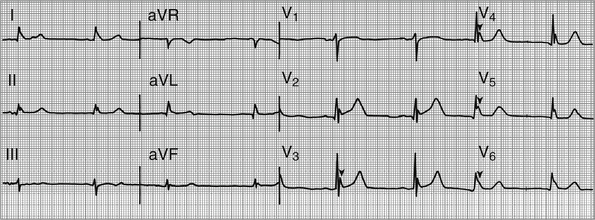Superficial burns are erythematous without blister formation, involve only the epidermis, and pain is localized. Superficial partial thickness burns are painful, warm, and moist with blister formation and involve the epidermis and superficial papillary dermis. Deep partial thickness burns reveal skin that is mottled, waxy, and white in appearance with ruptured blisters. Pain sensation is absent, but pressure sensation is intact. Full thickness burns involve both the epidermis and dermis, have a white to gray leathery appearance, and do not blanch with pressure. Monitor the ECG for arrhythmias, which are common in hypothermic patients. You may see the classic J wave—a small, positive deflection following the QRS complex (Fig. 9-1). Also monitor electrolytes, renal function, and acid-base status.
Emergency Medicine
5 How is burn severity classified? Describe the management of each class
6 Define hypothermia. How is it managed? What are the complications?

![]()
Stay updated, free articles. Join our Telegram channel

Full access? Get Clinical Tree


Nurse Key
Fastest Nurse Insight Engine
Get Clinical Tree app for offline access
